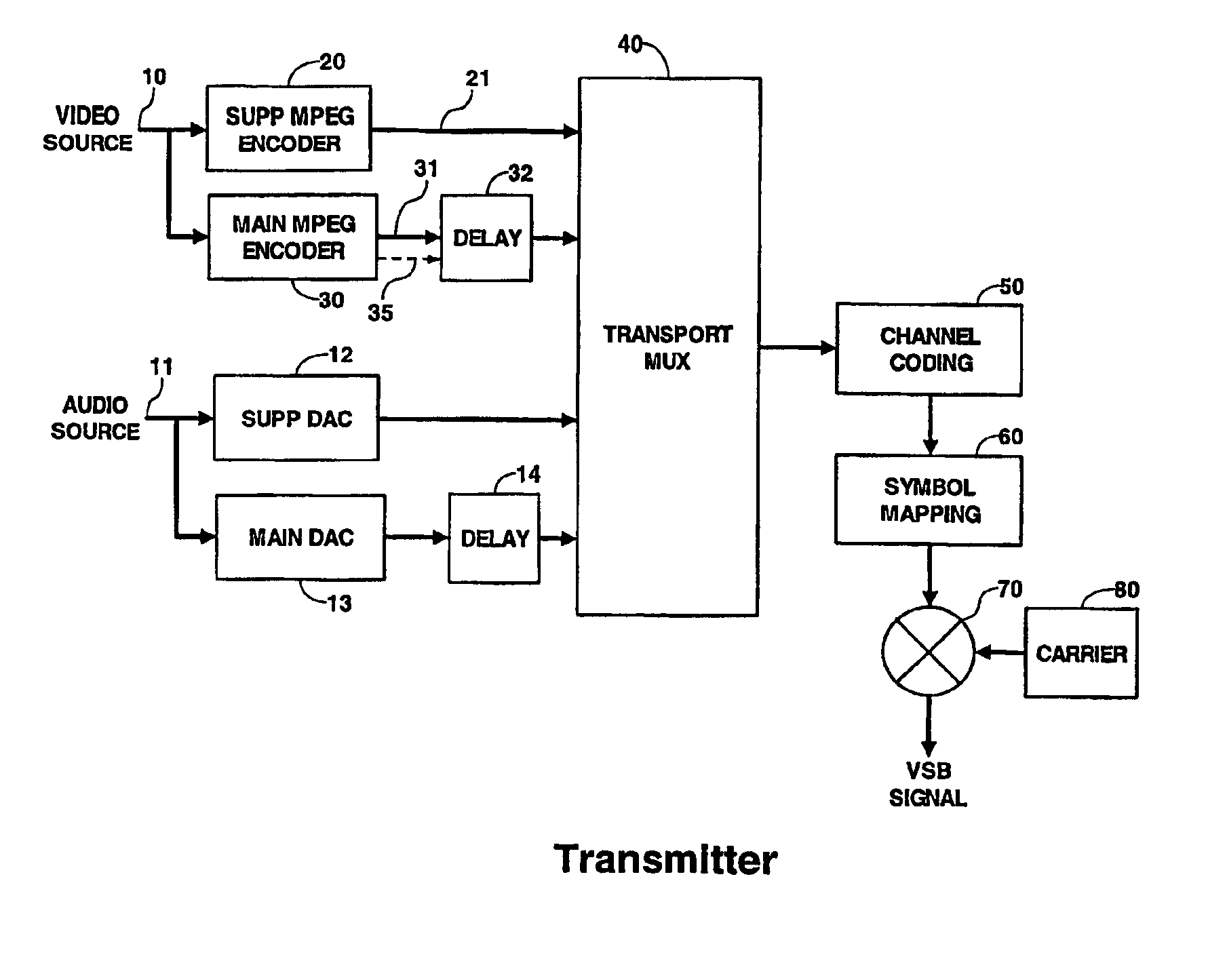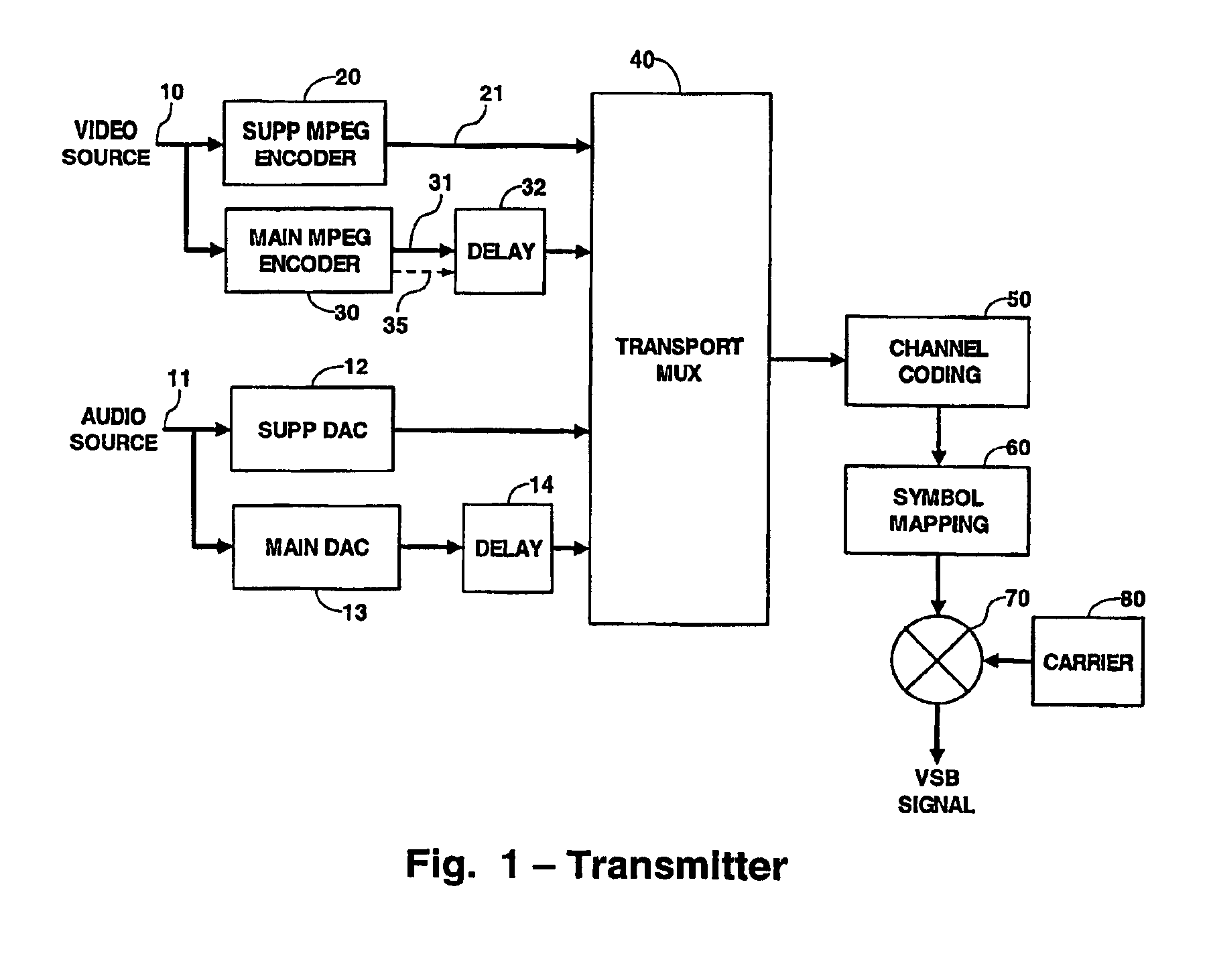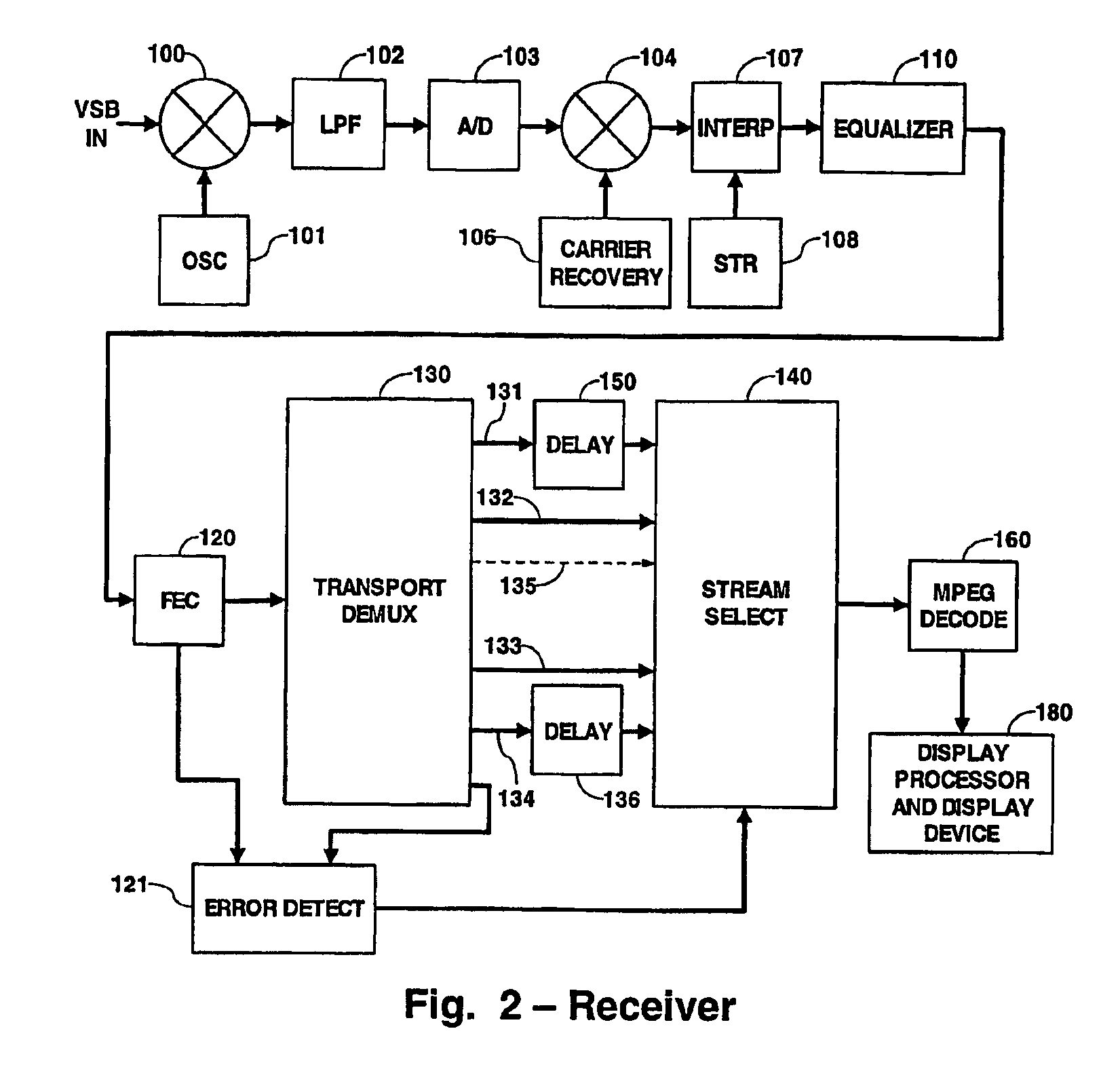Fade resistant digital transmission and reception system
a digital transmission and reception system technology, applied in the direction of simultaneous transmission of television signals by multiple carriers, amplitude demodulation details, television system scanning details, etc., can solve the problems of signal loss, fading, and loss of signal synchronization of demodulation system in tv receiver
- Summary
- Abstract
- Description
- Claims
- Application Information
AI Technical Summary
Benefits of technology
Problems solved by technology
Method used
Image
Examples
Embodiment Construction
[0019]FIG. 1 is a block diagram of a transmitter incorporating the principles of the present invention. In the illustrated embodiment, the transmitter operates in accordance with the provisions of the Advanced Television Standards Committee (ATSC) digital television standard dated Sep. 16, 1995 which is incorporated herein by reference. However, one skilled in the art will understand that the principles of the present invention are applicable to any communications system in which the channel is subject to fading.
[0020]Video source material is applied via a terminal 10 to MPEG encoders 20 and 30. These encoders provide video signal encoding and compression in accordance with MPEG standards. The output from the encoder 20 is applied via conductor 21 to one input of a transport multiplexer 40. The encoder 30 processes the data stream in the same manner as encoder 20 but its output is applied via a conductor 31 to a packet buffer delay 32. The output of the delay 32 is applied to anothe...
PUM
 Login to View More
Login to View More Abstract
Description
Claims
Application Information
 Login to View More
Login to View More - R&D
- Intellectual Property
- Life Sciences
- Materials
- Tech Scout
- Unparalleled Data Quality
- Higher Quality Content
- 60% Fewer Hallucinations
Browse by: Latest US Patents, China's latest patents, Technical Efficacy Thesaurus, Application Domain, Technology Topic, Popular Technical Reports.
© 2025 PatSnap. All rights reserved.Legal|Privacy policy|Modern Slavery Act Transparency Statement|Sitemap|About US| Contact US: help@patsnap.com



